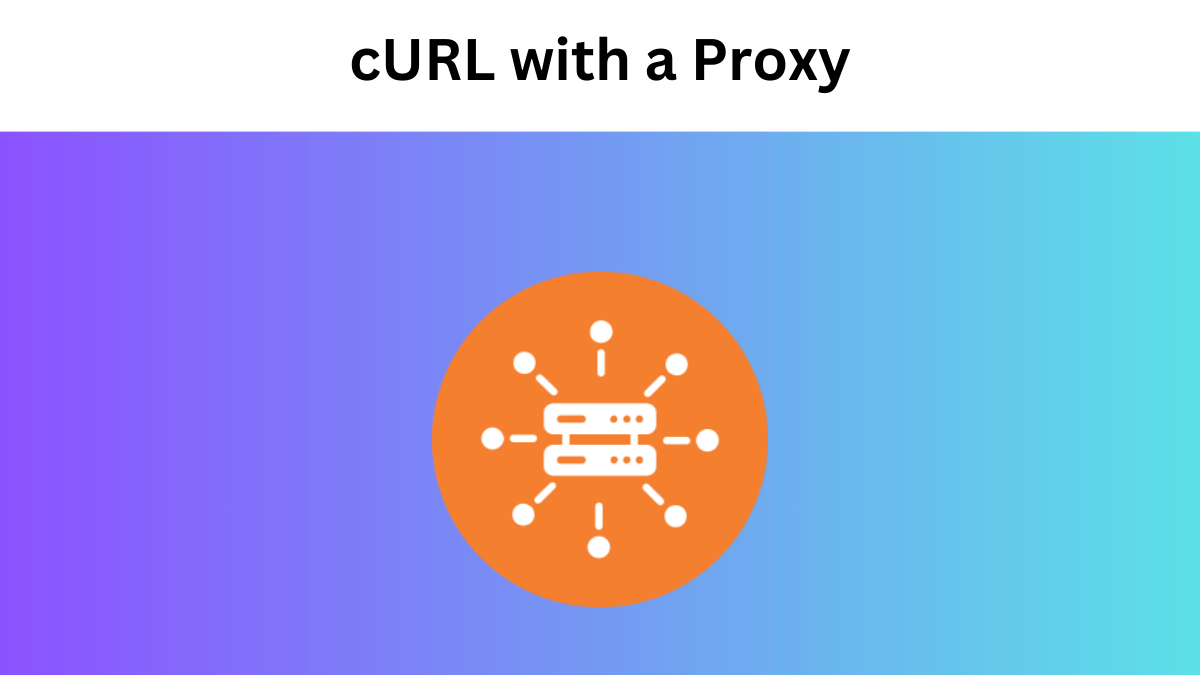If you are a developer, system administrator, or work with data, cURL is one tool you’ll find handy. What makes this tool so valuable is that it allows you to send and receive data directly through URLs from the command line. You can use this tool for various tasks, such as downloading files, testing APIs, or scraping websites, but the process becomes tricky with a proxy in between.
This is especially important in tasks when you intend to stay anonymous, access reliable data, or forward a geo-specific request. However, when curl is used with proxies, the risk of errors is relatively high, such as failed requests, unnecessary delays, or your connection might get blocked. This article will review the most common mistakes when using cURL with a proxy and how to avoid them.
Why Use cURL with a Proxy?
Before we get down to mistakes, let’s first understand why using a proxy with cURL matters.
You can think of a proxy server as an intermediary between your machine and the internet. This means that whenever you send a request with cURL, it goes through the proxy first before reaching the target server. This approach brings these advantages;
- Anonymity: It keeps your real IP address hidden from the destination server.
- Geo-targeting: It allows you to be seen as a real visitor who is browsing from another country or city.
- Going past Restrictions: It helps you access websites that have specific restrictions for certain regions or IPs, or control the traffic flow.
● Enhanced Security: It provides an additional layer of protection when connecting to sensitive endpoints.
Also Read: How Proxies boost data privacy & security
Curl & Proxies: Common Mistakes To Watch Out For
-
Use of Wrong Proxy Protocol
There are different types of proxies, like HTTP, HTTPS, SOCKS4, SOCKS5, etc. One common error is to use the wrong proxy type without updating cURL. Suppose that a proxy requires SOCKS5, but you chose an HTTP proxy; this will lead to a connection error.
-
Lack of Authentication Details
A username or password is sometimes required to connect to particular proxies. Failing to enter these details or formatting them incorrectly is a major problem. Consider this example;
curl -x http://user:password@proxyhost:port https://example.com
-
Misplaced Proxy Options in the Command
Another common error is not knowing the difference between the -x and –proxy flags, or when protocol-specific flags are to be used.
For instance:
- -x or –proxy is meant for HTTP/HTTPS.
- –socks4 or –socks5 is used for SOCKS proxies.
A mismatch between the two leads to a failed request.
-
Mismanaging SSL
SSL certificates are likely to show errors when they are handled incorrectly when sending requests through HTTPS proxies. For example, you may forget to use flags like -k to permit an insecure connection.
-
Ignoring Proxy Timeouts
Proxies run at a lower speed than direct connections. If appropriate timeouts are not set up beforehand, cURL can get stuck forever, and your request will never be successful.
-
Ignoring Error Logs and Output
Many users run cURL commands without first verifying what the verbose output says. Running a command through a -v or –verbose can result in error messages that can guide you to the precise issue with your proxy. Skipping this step can prevent you from
cURL & Proxies: A Guide to Best Practices
By following the best practices given below,
- Be clear about the type of proxy you are using. If it’s a SOCKS5 proxy, the-socks5 flag works best instead of the generic -x.
- Mention the correct details through this format: user:password@host: port for successful authentication.
- If you come across a proxy-related issue, use verbose mode (-v) to debug.
- When setting timeouts, use options like –max-time or –connect-timeout to prevent pending requests.
- Experiment with the proxy separately before using it with cURL. A simple ping or browser test can confirm whether it’s working or not.
- Be cautious when dealing with SSL. Stick to -k when necessary, as it lowers security.
- In case of a large-scale scraping, make sure to rotate proxies to prevent getting detected or blocked.
Adopting these practices when using cURL with proxy will not only save you time but also make your cURL commands more reliable and effective.
Also Read: Scraping Proxies: Innovative Ways to Revolutionize Your Data Collection
Conclusion
Using a cURL with a proxy is a powerful way to bypass restrictions, enhance your privacy, or execute region-specific requests. However, wrong proxy type, misplaced authentication, or improper SSL handling are all mistakes that can hamper your workflow and prevent a successful connection.
The good news is that most of these issues can be avoided if you know the do’s and don’ts and are attentive to details. Adhering to best practices can increase the prospects of setting up a smooth, secure, and dependable cURL-and-proxy workflow.
All in all, learning how to use cURL with a proxy correctly can make the process stress-free, whatever your goal.


Comments are closed